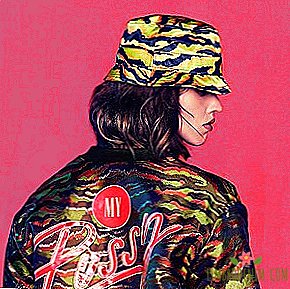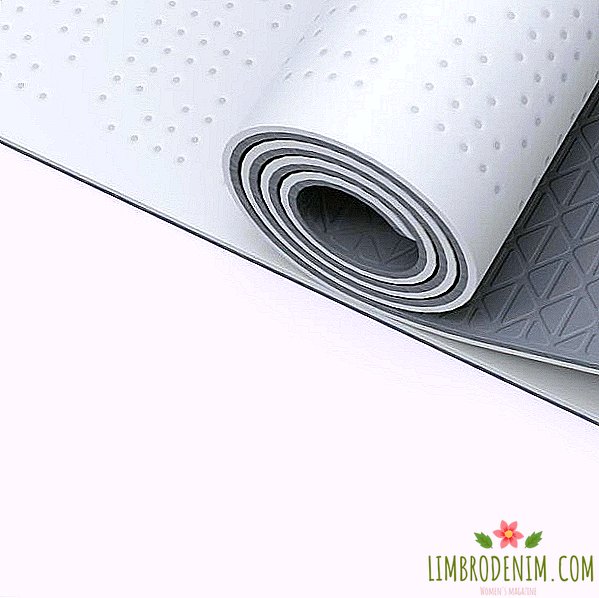Two extremes: How fashion has taken a course on mediocrity and vulgarity
Since the publication of the manifest column The outstanding fashionable ex-critic of The New York Times, Katie Horin, passed half a year. In her text, Katie urged designers to return to the creation of ordinary wearable clothing that women need, only a small number of whom feel the need for a conceptual fashion. And now, after six months, the brands one after another represent the cruise collections of the future of 2015, according to which one can largely judge the spring-summer collections. And one after another, they are to simplicity, or, worse, to what is commonly called simplicity: vulgarity.

From the main (spring-summer and autumn-winter) interseasonal collections are distinguished by a commercial orientation. The task of cruise and pre-rental things is extremely simple: to occupy the shelves and rails after sales, until new collections have arrived in stores. When looking at the new collections of 2015, it becomes clear that most of the brands lowered the degree of "conceptuality": someone - like Louis Vuitton, Acne, Maison Martin Margiela - to understandability and wearability, and so much that it became boring; others — Chanel, Marc Jacobs, and on the verge of Michael Kors — have come down to thrash altogether.
So, brands with more advanced customers, such as Acne, simplify design and styling. The Swedes, who presented several seasons showing bulky, angular, strange things, for 2015 presented just things (shorts, pants, denim jackets and skirts, white shirts), which the creative director of the brand Johnny Johansson called “realism”. Another recent example: the couture collection of Raf Simons for Christian Dior consisted of a third of overalls and dark-colored men's coats with identical turtlenecks and different-colored trousers. For a couture show with rustling dresses of jewelry work, this is, frankly, atypical, but on the other hand, why not present casual clothes of the same jewelry work? After all, ideally tailored coats and pants, in spite of any price, will be in great demand. Attention designers to boredom can be understood - not every multibillion-dollar audience in the soul of the artist. More often we are just people who, when leaving work, do not mind buying something for themselves. Melancholy, indifference, blues, burdensomeness, apathy, lethargy, drowsiness, despondency are visited by people far more often than inspiration and desire to originate.
Another case is the appearance in the trash collections. Only five years have passed since the moment when Swedish designer Ann Sofie Back showed a tanga skirt at London fashion week — then the designer was inspired by Lindsay Lohan, who often appeared in light without underwear. From the moment Jean-Paul Gauthier and John Galliano became the stars of kitsch, water has flowed even more than 30 years. Apparently, during this time, kitsch and trash designers missed a lot and turned to vulgar things that are easily read by the audience.
The first trend in thrash was determined by Lagerfeld, showing silk dimensionless flowered dresses, incompatible prints, gilded elastic pants and blouses with volanes on Chanel-2015 cruise. Thus, he proved that it is sales and marketers who control the modern fashion. Lagerfeld also made a nod to the East, especially the Near and Eastern Europe: Dubai, Kuwait, Azerbaijan, Russia and Kazakhstan. Of course, the Far East is still important for brands (we remember well the Asian collections of 2012-2013), but it is already widely mastered by luxury brands. Radical reception was used by Marc Jacobs, having entered not the territory of the creative director of Saint Lourent Edie Sliman, who was one of the first to take up the idea of wearable clothing in luxury homes ("Zara for adults"). Jacobs after a successful and sophisticated autumn collection showed mini-dresses in shine, costumes with bright prints and leopard mini-boots. Meanwhile, House of Holland is writing a slogan from the 70s health advertisement on the brilliant animal-print bomber jacket: "My Pussy, My Rules". But who remembers this advertisement? Jeremy Scott offers for the brand name and for Moschino pop and dubious ideas that produce a guaranteed effect on buyers: a Spongebob dress, a skirt with a rubber band from men's underwear, a top from a large, vulgar mesh — everything works like a T-shirt from Charm El Sheikh with inscriptions like "Nobody is perfect. I am nobody". However, this slogan would be ideally suited to the role of the motto of the new trend - mediocrity in fashion.

If you compare fashion with the film industry, it’s hard to make art-house every season and try to sell tickets to it as a Hollywood hit.

The brands whose things belong to bad taste have always existed: Roberto Cavalli, Thomas Wylde, Philipp Plein. Things simple as board, cut, strewn with rhinestones, skulls, acid and leopard prints, lace, consistently in demand around the world. And it is not surprising, because to wear things of complex architectural design, you must have a certain level of taste, which you need to work on every day. Not everyone has the time, the need and the desire for it, but there is always a desire to buy something elegant. A pair of glossy magazines, women's websites and TV shows is a more textured springboard for the mass buyer, and it is hard to fight this collective unconscious. If today more reputable critics are influenced by the tastes of people, Kim Kardashian, Rita Ora and Rihanna - it's time for brands to make friends with them. Being a commercially successful brand (which implies mass) and at the same time elite is quite difficult. If you compare fashion with the film industry, it’s hard to make art-house every season and try to sell tickets to it as a Hollywood hit. And why, if you can immediately shoot blockbusters?
Indicative and surprising in this regard, the new cruise collection of Christopher Kane, who never lacked ideas. Kane introduced what modern kitsch and grotesque might look like: leopard print, neon and acid colors, lace, translucent underwear, transparent inserts, neon sconces — something the designer showed at the beginning of his career. At the same time, it seems that neon lace has never looked so good. "There's no such thing as bad taste," says Kane. Critics, having not decided whether it was good or bad, wrote it off as a modern post-flavor. Designing flirting with the style of ordinary people works out perfectly - in a lookbook of a collection, a lace dress looks quite different than it could have looked like a visitor to Gipsy, because she was wearing a masculine model with a haircut of zero. Kane changes the meaning and it works: why only sexy girls should wear sexy dresses, and masculine girls should wear shapeless clothes? Let it be exactly the opposite.
Japanese democratic brand Uniqlo has launched a new clothing line with the writer Ines de la Fressange, the style of which is considered rather dubious - the icon of the French style Ines puts on at once she takes a jacket, a blouse with ruffles, ballet flats and necessarily a thin bright red belt and wears everything elegantly, but provincially . Although the collection of the brand turned out to be clean, the combination of things at the presentation turned out exactly the way most buyers will accept - this is good for the brand and for sales. However, Ines herself says that fashion and good taste are made from bad taste. She compares fashion with perfumery: "To make a fantastic fragrance, you need to add something that smells bad. Then everything will fall into place. Those who look perfect are boring."
Vanessa Friedman, ex-director of The Financial Times fashion and current director of The New York Times, said in an interview with The New York Times that there is nothing surprising: “Fashion is becoming a global industry, and brand designers are more focused on business models. The division into commerce and concept becomes a relic of the past. " Thus, the Belgian avant-garde Dries Van Noten, who managed to build a successful brand, while maintaining the conceptuality, in the inter-seasonal collections (which are not published anywhere, but they are in stores) include pink and gold Lurex blouses and leopard T-shirts. And avant-garde brands like Comme des Garçons live, first of all, through the sale of perfumes and basic things like t-shirts and sneakers. Kira Plastinina, Sultanna Frantsuzova, Dasha Gauzer, CAPSLOCKSHOP - all these ambiguous Russian designers and brands are commercially successful. From the point of view of style and fashion, this is, of course, sad, but from the point of view of experience for young Russian designers, this is a case in point: it is better to decide in advance which commercial idea will allow you to sew headsets and original bombers with a calm soul.
The slogan of Jean-Paul Gautier "Antifashion is fashion" today is more alive than ever. Arguing about modern kitsch, you can remember how in 1989, the same Gauthier, in an interview for Vogue, said that he now "broadcasts a moment in history when everything is mixed up," and that he would like "people to open their eyes to things they seemed unacceptable to them, and they saw beauty where, in a normal situation, they did not expect to see it. " And these words describe well what is happening now. In addition, if you treat thrash with taste, then even a lacy neon dress can be worn and look cool, and Conchita Wurst may well become a role model.




